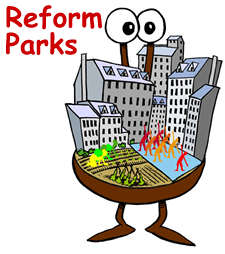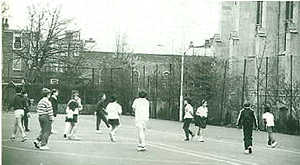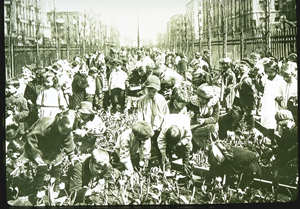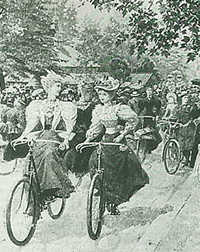
The first 30 years of the 20th century saw a new trend in urban park design - the Reform Park. Now parks were intended to be "a substitute for the street" - steering people away from drinking, gambling and crime. "What better training in citizenship as well as opportunity of health, can be offered any of us, than in sharing in the upkeep of our parks and gardens?" said Sir Patrick Geddes, a visionary Scottish proponent of community gardens for growing vegetables and maintaining well-being. In America, Chicago's Pulaski Park, New York's Steward Park and San Francisco's Funston Park were created to organise activities for the masses. "Leisure time" - often a euphemism for unemployment - should not permit the devil to find work for idle hands, and so gyms, athletics stadiums, swimming, showers and dancing were now to be included in park designs - often without the need for greenery. "Neighbourhood" parks in working-class areas satisfied the 'five minutes away' rule. Vegetable plots were provided on New York's West side in the 1900s. Even libraries, dental clinics and craft workshops were situated in parks. Schools sponsored farm programmes which led to the Victory Gardens programme for World War I. Demonstration gardens showed adults how to grow vegetables; such were the skills that had been lost so quickly. Metropolitan ParksBoston pioneered the idea of the Metropolitan Park System, which linked parks across the town with avenues and boulevards and connecting parkways. This idea has been copied in much successful modern town planning. --> recreation and sports spaces |
 Above: St Luke's Recreation Ground Chelsea, London.  Below: Cycling in Battersea park 1900.  |
To commission work of this nature, contact David Thorpe.
back to About David
© David Thorpe 2006 All Rights Reserved
 A history of greenspace and parks
A history of greenspace and parks